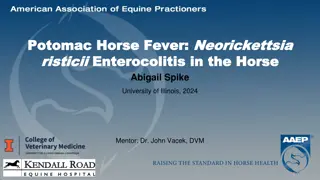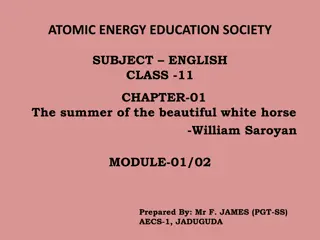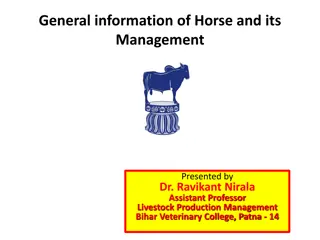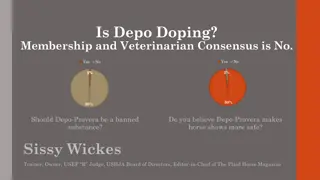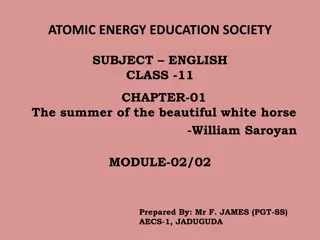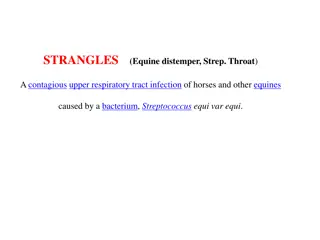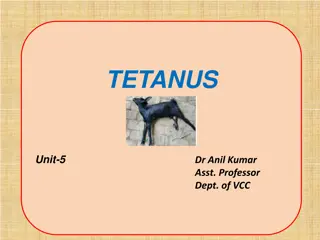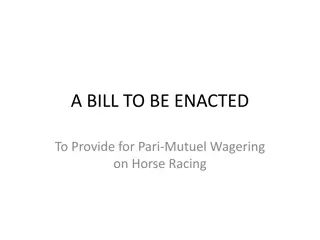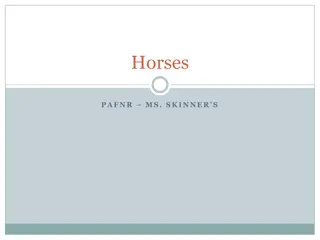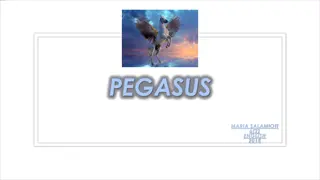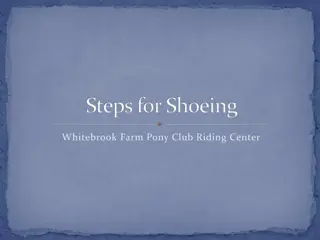Understanding Oxyuris equi: Horse Pinworm Infection
Explore the general characteristics, hosts, life cycle, transmission, and pathogenesis of Oxyuris equi, a pinworm that infects horses and donkeys. Learn about its unique features, including the hour-glass-shaped oesophagus, mating behavior, and effects on its hosts.
Download Presentation

Please find below an Image/Link to download the presentation.
The content on the website is provided AS IS for your information and personal use only. It may not be sold, licensed, or shared on other websites without obtaining consent from the author. Download presentation by click this link. If you encounter any issues during the download, it is possible that the publisher has removed the file from their server.
E N D
Presentation Transcript
Bihar Animal Sciences University | Family: Oxyuridae Pin worms Dr. AJIT KUMAR Department of Veterinary Parasitology Bihar Veterinary College Bihar Animal Sciences University Patna-800014 Date-23.04.2021 Image source: Google image
Family: Oxyuridae General General Characters Characters: o Oesophagus developed posterior bulb has well o Female pointed tail worms have long o Male has single spicule o Vulva located anteriorly. o Direct life-cycle
Species Sl. Sl. No No . . Species Species Host Host o . 1 Oxyuris equi ( Pin worm of Equine) Horse & donkey 2 Enterobius vermicularis ( Pin worm of worm of man) Man 3 Skrjabinema ovis Sheep & Goat
Oxyuris equi Final Hosts Final Hosts : Horse & Donkey : Horse & Donkey Location: Large intestine Location: Large intestine Pin worm or rectal worm of Pin worm or rectal worm of horse horse
Oxyuris equi Hour-glass shaped oesophagus General Characters: Hour-glass has a well developed posterior bulb. Female is much larger than the male and have long tapering tail. shaped oesophagus Young females are almost white in colour, slightly curved and with a pointed tail whereas mature female worms are slatey-grey or brownish in colour with a very long narrow tail (3 times of the rest body). o Male has one pin pin- - shaped shaped spicule. elongate, o Eggs flattened on one side with a plug at one pole. are slightly
Oxyuris equi Life Life- -cycle cycle: : o Infective containing larvae. stage: 3rd egg stage Transmission: Transmission Transmission through Infection occurs by the ingestion of infective containing third stage larva on bedding. in equines eggs fodder and
Oxyuris equi Life Life- -cycle cycle: : After fertilization, the mature female worms crawl out through the anal opening and lay eggs in clusters on the skin in the perineal region. 3rd stage larvae (L3) are developed inside eggs and final hosts get infection during feeding/ ingestion of egg containing L3.
Oxyuris equi Pathogenesis: Anal pruritis produced by the egg laying females. Affected animal rubs the base of its tail against any hard object, causing the hairs to break off and the tail acquires an ungroomed ungroomed rat rat tailed tailed appearance appearance. Rat Rat tailed tailed appearance appearance
Oxyuris equi Clinical signs: Rubbing of tails to get rid of pruritus which result broken hairs and gives it a rat-tailed appearance .
Oxyuris equi Diagnosis : o On the basis of Clinical signs Examination of the perineal region of infected horse coloured masses of eggs. Eggs Eggs are are elongate, elongate, slightly one one side side with with a a plug plug at revealed cream slightly flattened flattened on at one one pole pole. . on Egg
Oxyuris equi Treatment Levamisole, Fenbendazole, Pyrantel tartrate, ivermectin etc. are used in the treatment.
Oxyuris equi Control: Good hygiene in stables, frequent removal of beddings and prevent contamination of feed and drinking water with beddings are helpful in controlling the Oxyuris equi infection in horses.
THANK YOU






